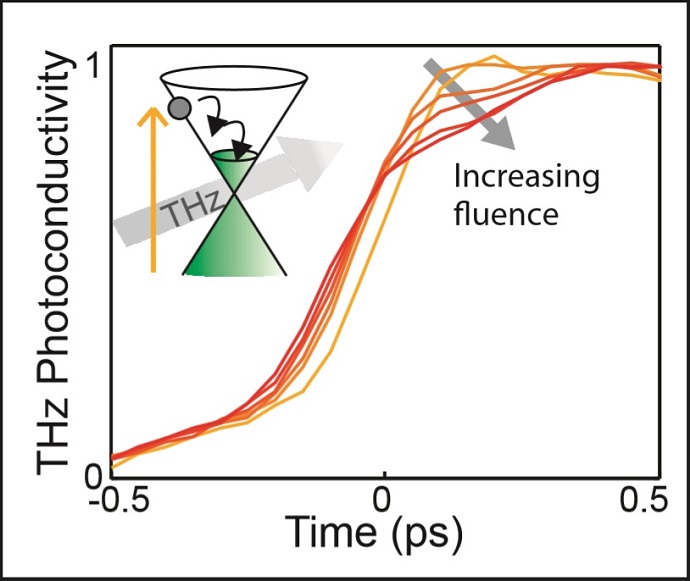2014/10/22
For optoelectronic applications of a material, a thorough understanding of the processes that govern energy relaxation of photoexcited carriers is essential. In graphene, femtosecond energy relaxation occurs through two competing pathways: carrier–carrier scattering, creating an elevated carrier temperature, and optical phonon emission. So far, it has not been clear what determines the dominating relaxation pathway.
Researchers from the Max Planck Institute for Polymer Research (DE), FOM Institute AMOLF (NL) and ICFO collaborate on a study recently published in Nano Letters. They reach a unifying picture of the ultrafast energy relaxation by investigating the terahertz photoconductivity, while varying the Fermi energy, photon energy and fluence over a wide range. The results show that sufficiently low fluence (≲4 μJ/cm2) in conjunction with sufficiently high Fermi energy (≳0.1 eV) gives rise to energy relaxation that is dominated by carrier–carrier scattering, leading to efficient carrier heating. Upon increasing the fluence or decreasing the Fermi energy, this process slows down and the carrier heating efficiency decreases, resulting in energy relaxation that is increasingly dominated by phonon emission.
The researchers present a simple thermodynamic model that reproduces the data for a wide range of Fermi levels and excitation energies and allows them to qualitatively assess how the branching ratio between the two distinct relaxation pathways depends on excitation fluence and Fermi energy. The model shows that carrier heating through carrier–carrier scattering reproduces the negative photoconductivity for doped graphene that was observed at terahertz frequencies by different groups around the world.

Ultrafast electron heating in graphene
When and why it wins over lattice heating

Efficient carrier heating through carrier-carrier scattering











